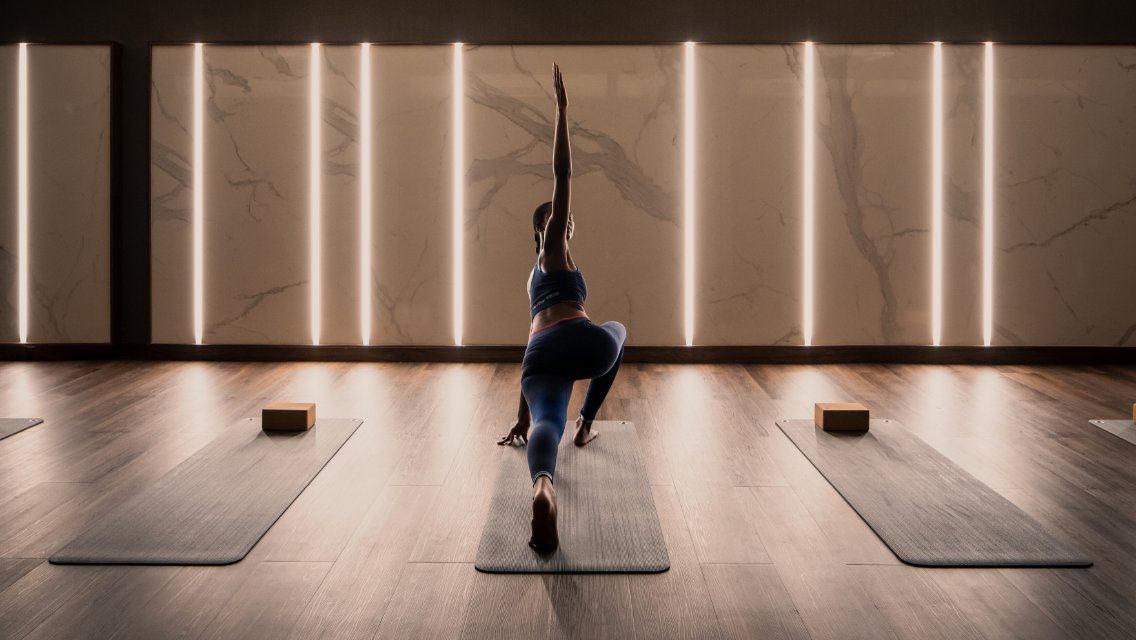Many of us have experienced setting healthy intentions for staying active in the months ahead — only to shortly after have that enthusiasm and momentum subside, whether it’s because life is busy or the novelty of the program just isn’t so novel anymore.
No matter why you’re feeling less motivated, there are plenty of reasons and ways to make daily activity a priority. “The ability to move your body every day is a gift,” says StaiSean Lyew, a five-star elite group fitness performer at Life Time in Hackensack and Montvale, N.J. “When you shift your mindset to focus on the positive — including the benefits of exercise and the small successes you have along the way — you’re much more likely to stick with your goals. And then, each new day is an opportunity to be a better version of yourself.”
We asked Lyew and a few other Life Time experts to share their best tips for falling in love with exercise for the long haul.
1. Try a little bit of everything until you discover what you love.
Everyone has different preferences when it comes to working out, and the choices may seem endless, especially when you consider all the options offered at a health club.
“My biggest tip is to experiment with different types of workouts,” advises Lyew. “As a Life Time team member, I have the luxury to suggest activities like GTX, Ultra Fit, yoga, Pilates, MB360, Alpha, and so much more. I tell people to listen to their body and choose something that feels both physically challenging and enjoyable. Consistency often comes when you find pleasure in the process. And it’s perfectly acceptable to mix and match all these options to switch it up.”
Ebonny Fowler, a certified group fitness coach for Life Time in New York City, adds that it’s important to customize your workouts to suit your unique needs. “Modify movements or try smaller, more attainable workouts. Don’t feel pressured to do an hour-long session. Whether you have 30 minutes, 10 minutes, 5 minutes, or even just 60 seconds to get up and stretch, it can make a difference in how you feel throughout the day.”
Learn more: “The Ultimate Guide to Life Time Classes” and “What’s Your Signature Group Training Class Personality?”
2. Remember that your body was made to move.
If exercise feels like a chore than something you get to do, it may be helpful to remind yourself how good it is for your body — and how good you’ll feel afterward.
“If you’re dreading a workout, focus on the benefits of exercise, including improved mood, increased energy, and better overall health,” Lyew suggests. “The feeling of completing a workout can also give you that sense of reward or accomplishment — you’re one step closer to your goals.”
“Our bodies are made to move,” adds Roz Frydberg, certified fitness coach and ARORA lead at Life Time in Ontario, Canada. “Even if you just get up and go for a short walk, you can count that as a win.”
Fowler encourages remembering the benefits that extend well beyond the physical. “There’s so much freedom in knowing that movement improves your quality of life. It strengthens muscles and bones, reduces risk of chronic diseases, improves brain health and memory, and helps with your everyday lifestyle. It helps me feel stronger when I carry groceries, climb stairs, lift bags of laundry, run around with my 5-year-old son, and I’m able to pick him up when he wants to fly high and be ‘on top of the world!’”
Learn more: “Expert Answers: Why Do I Feel So Good After a Workout?”
3. Set realistic goals and be kind to yourself.
While it’s important to establish a consistent routine, you don’t have to dive in headfirst with high-intensity workouts every day. You can start small and still experience the many benefits of moving your body.
“Having a positive mindset around exercise is all about perspective,” says Dominic Flores, studio leader and five-star elite performer at Life Time in Shenandoah, Texas. “It’s unrealistic to expect 100 percent from your body every day. Celebrate both the good and the not-so-good days, understanding that setbacks are part of the journey. It’s not a race — you’ll reach your goals one step at a time.”
Frydberg stresses the importance of listening to your body. “Ask yourself, What do I need to do for my body and soul today? One day it might be that you need to crush a strength class, and another it might be that you need gentle yoga or a brisk walk.”
Learn more: “Is Your Goal Realistic?”
4. Find a supportive community or accountability partner.
Our human nature often has us craving connections with others, and being part of a like-minded community can keep you accountable to your movement goals.
“Sometimes you need encouragement or inspiration from a workout buddy or a coach to get started — or to keep going,” Frydberg says. “I am so inspired by our members at Life Time and the goals they have. I chatted with a member recently who is training for an obstacle-course marathon! And now I can check in with her on her training when I see her next. You never know what kind of encouragement you’ll be able to give or receive when you simply strike up a conversation with someone.”
Learn more: “7 Ways to Be a Great Workout Partner”
5. Celebrate every success.
Another key factor for maintaining a positive mindset around exercise is to acknowledge even your smallest victories. Did you try something new? Were you able to lift slightly heavier weights? Did you extend your endurance run by a few minutes? Share your accomplishments with your family, friends, or workout buddies and let them help lift you up.
“Give yourself some grace and gratitude for all the ways your amazing body shows up for you,” says Fowler. “Celebrate every accomplishment — no matter how small. We often take things for granted, like our abilities to get out of bed, stand, walk, and move. Focus on all the great things your body can do.”
“Every step in your journey is progress,” adds Flores. “Let the little wins keep you moving forward.”





